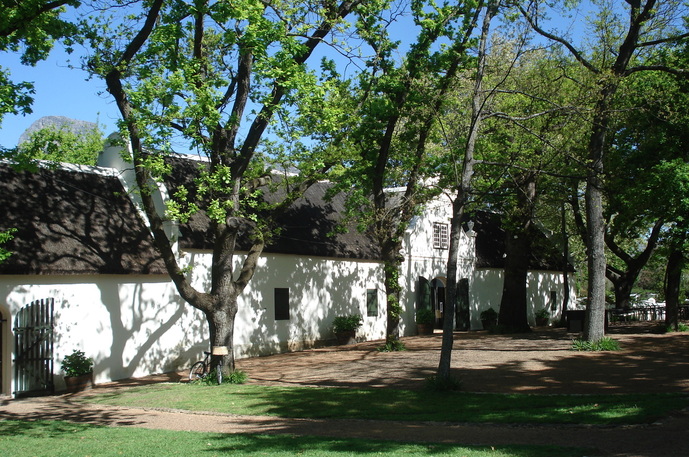
The beauty of the positive forms of trees and foliage, contrasted with the negative play of the shadows on the stark white walls.
Why so much white? To understand the answer to that question, one needs to understand white.
White is often referred to as the absence of color. In reality it is the most alive “color”. If you paint a wall a color it will absorb the light and reflect back only one color (the color you have chosen). If you paint a wall white, it has the capacity to reflect back all the colors of the rainbow. It reflects back the warmth of the morning sunrise, or the rosy hue of the sunset, the blue of an adjacent swimming pool, the luminous green of surrounding foliage, or the warm color of light reflecting off adjacent paving. The moods of white are constantly changing. It is alive! The next time you look at a white wall bathed in sunlight, look carefully and see what you really see. You might be surprised.
White accentuates the “positive/negative” play of the surrounding foliage – the shadows of a tree adjacent to the positive form of the tree itself. As the sun moves the shadows constantly change. The play of light and shade on the white painted building accentuate and give definition to its form.
White creates the perfect counterpoint in a verdant landscape. Because it is not a “color”, it does not clash with the colors of its surroundings. While being the perfect counterpoint, it also harmonizes perfectly.
White, when used in interiors, also does not clash with any color. Therefore the décor is not bound by the colors of the painted interior, and can be varied easily and with more versatility.
I love color and I use it whenever a client requests it or when guidelines prescribe it, but personally I really love white.
White is often referred to as the absence of color. In reality it is the most alive “color”. If you paint a wall a color it will absorb the light and reflect back only one color (the color you have chosen). If you paint a wall white, it has the capacity to reflect back all the colors of the rainbow. It reflects back the warmth of the morning sunrise, or the rosy hue of the sunset, the blue of an adjacent swimming pool, the luminous green of surrounding foliage, or the warm color of light reflecting off adjacent paving. The moods of white are constantly changing. It is alive! The next time you look at a white wall bathed in sunlight, look carefully and see what you really see. You might be surprised.
White accentuates the “positive/negative” play of the surrounding foliage – the shadows of a tree adjacent to the positive form of the tree itself. As the sun moves the shadows constantly change. The play of light and shade on the white painted building accentuate and give definition to its form.
White creates the perfect counterpoint in a verdant landscape. Because it is not a “color”, it does not clash with the colors of its surroundings. While being the perfect counterpoint, it also harmonizes perfectly.
White, when used in interiors, also does not clash with any color. Therefore the décor is not bound by the colors of the painted interior, and can be varied easily and with more versatility.
I love color and I use it whenever a client requests it or when guidelines prescribe it, but personally I really love white.


